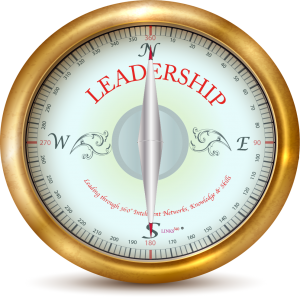Understanding Collective Leadership
What is Collective Leadership?

The overriding definition of Collective leadership, based on experience and research, is:
“ a form of leadership based on shared values for achieving impact in the public interest, rather than individual leadership based on self-interest”
In this article, I explain how we think about and promote collective leadership. Using what I refer to as six Intelligent Leadership Questions (ILQs), three are briefly addressed:
• What are the challenges that collective leadership seeks to address?
• Why is collective leadership a crucial part of the solution?
• How do we practice collective leadership?
In this blog, I can only address the essentials of these three questions whilst acknowledging even more briefly the importance of three further intelligent leadership questions; where, when and who. I hope to provide some guidance and support on how we can respond collectively to leadership challenges, explain why collective leadership could be an important part of the solution and give some advice and tips on how collective leadership can be practised. To read more, CLICK HERE.
What are the Collective Leadership Challenges?
The opening three questions are essential as we move into the third year of the Covid-19 pandemic.
In a recent business survey, business leaders recognised the importance of resilience, adaptability and flexibility, with 67.5% describing agility as more important than ever [1].
We live and lead in an age of complexity and uncertainty. One of the reasons collective leadership faces so many obstacles is that this style challenges traditional approaches and how people think about leadership. ‘Heroic’ and ‘courageous’ leadership labels have been around for some time. We often hear, however, of supposed new ideas such as ‘bold’ leadership, as published in the Economist yesterday, which I posted about. Unfortunately, bold leadership is contrasted negatively with collective and collaborative leadership [2] in this example. The term also predates this latest offering from McKinsey [3]. In other cases, the term (and similar) is applied to collective leadership rather than the individual. ‘Trekkies[4]’ will remember the immortal words “To boldly go where no man (sic) has gone before’. It wasn’t just Captain Kirk; it was the whole team. Mark my words; many leaders still focus on the individual and – in many cases – themselves! Not all, but enough to motivate us towards selflessness. More of this (soon) in later posts, but please join the debate.
As I argue elsewhere, thoughts on and the practice of leadership has developed over a few thousand years . Leadership capacity and capabilities face challenges in the 21st century that some argue have never been experienced before, such as the digital revolution (a modern form of the industrial revolution) and rapidly emerging crises such as the financial crash of 2008. I will leave the issue of whether these were ‘unprecedented’ for another post soon, but for now, we can look at one crisis that is often described as ‘unprecedented’, that of the Covid-19 pandemic. Was this unprecedented? What do you think? I might follow this up with a Linkedin Poll, but please include your comments about this question for now. What is clear is that the impact of the pandemic has been both globally significant but also globally disruptive and the cause of massive organisational change and overhaul. Can collective (and selfless) leadership be the judge? Again, please comment on this in response to the accompanying post to this article.
Why Collective Leadership can be part of the response to the challenges
A critical challenge is that components of collective leadership exist separately and often determine leadership practices in isolation from each other. Individual leadership will often overshadow the collective. However, this should not put us off. The challenge is to integrate how we lead towards shared values and goals. Not easy, but certainly possible.
We are all different. We should embrace this diversity but seek consensus on what is essential. This leads to another critical challenge (and one reason why so many avoid the collective). We do not always have broader interests at heart. A further article will look at the challenge of managing egos (both individual and corporate – yes, organisations have egos), but the outcome defines the difference between individually focused and collectively motivated leadership styles. That outcome is in the public interest. The public interest is often described as acts that focus on the public’s well-being or, from Aristotle, the common good. This sounds simple enough. The reality is different. As with leadership, the public interest is difficult to define and sometimes described as counterproductive. We know, for example, that evidence has shown that some decision-makers are accused of “invoking the public interest as a smokescreen to disguise self-interest action” . But, collectively, we can share values, define collective responses and seek outcomes that benefit the public, whether this is a corporate or a not-for-profit public. Is this possible? It is a debate that we need to have. Again, respond below.
Collective leadership is a form of integrated leadership. We should not ‘throw the baby out with the bathwater’ (for global readers, keeping the good parts of what already exists). We stand on the shoulders of giants. Yes, that does include individual leaders, but ones who are collectively bold. Laissez-faire leaders trust and rely on their team members, transactional leaders favour structure and good organisation to achieve goals and value efficiency, and transformational leaders focus on vision and values and seek to inspire others through the enablement of creativity and maintaining momentum. All of these leadership attributes matter. Trust is important to all, but it remains essential for the transformational leader, and true transformational leaders will be authentic. Unfortunately, some pseudo-transformational leaders purport to be transformational, but the reality is they are more transactional. Just as pseudo-transformational leaders claim exclusivity to their traits, many organisations claim they are transformational. We need a public interest test. Diversity of leadership styles should be embraced within a collective but aligned to shared values and goals. Remember, leaders today need to be agile. Calling on different leadership styles at different times and for different reasons will remain a key strategy. Now, let us move to the ‘how we lead collectively’ question.
How do we lead collectively, and with what impact?
You are part of the collective; we are all part of the collective.
As collective leaders, we embrace collaborative, cooperative and community leadership, drawing on relational and systems-led approaches. Being alert and responsive to change is critical to the practice of collective leadership, with leaders being alert to change and able to exercise swift and nimble responses. Underpinning this is to understand that learning and leadership follow the same path and are lifelong journeys. Please take it from me, who has followed a path for many more years than I wish to record; we never stop learning and never stop reimagining, reinventing, renewing, reviewing and continually reflecting on our leadership practices and its impact.
We are in this together. We use Applied Leadership Challenges (ALCs) to apply learning and leadership to practice. Grounded in the principles of action learning, a leadership ‘space’ combining virtual and face-to-face peer-led learning is created. It initially focuses on developing a shared vision across the organisation and its networks (top-to-bottom, bottom-to-top and diagonally). Leadership practitioners at all levels share their ideas and thoughts through practical applications. Implementation of ideas follows with continual reflection on the shared vision, values and goals. Options exist to include peer-led but facilitated sessions, supported by our LINKS360® learning and application process (Leading through 360° Intelligent Networks, Knowledge and Skills’). A virtual Total Learning Environment (virtual campus) supports blended learning in gaining knowledge through cutting-edge e-learning media and resources and direct face-to-face interaction.
Our approach represents a virtuous cycle of research – informs development – informs practice with optional access to more detailed research and further reading. In all cases, we aim to provide a practical set of tools and techniques to support collective leadership’s understanding, creation, and demonstration.
In Conclusion: Responding to multiple public interests.
Collective leadership is complex. It consists of multiple challenges and contexts, several layers of leadership, multiple stakeholders, and many potential outcomes. The impact of collective leadership will determine the outcome patterns. Given that an overabundance of outcome measures is likely for anyone given collective leadership activity, it is essential to define an outcome framework that will help us assess the impact of collective leadership.
Our scope for leading in the public leadership is not just for traditional public management or public administration. We are all members of the public. As such members, we remain public as customers, consumers, or contributors to the not-for-profit sector, just as we do if we engage with or are employed by the public sector. We all have a shared responsibility for matters of concern to us. We can play our part in wicked problems of sustainability and the breakdown of the benefits of globalisation but in keeping the public interest at the heart of all that we do.
Ask three crucial questions;
Stakeholder analysis is a science just as much as it is an art. Why do we need to engage the public, and who is your public? Do you know who you serve and where those whom you serve are located? What levels of interest does each have? Have a go at answering these questions in an ongoing debate that I hope this paper influences. You don’t need to agree, but please contribute to a critical discussion.
- ENDNOTES:
[2] https://www.economist.com/leaders/2022/10/05/do-mckinsey-and-other-consultants-do-anything-useful
[3] See also, https://aveus.com/discover-bold/
[4] a fan of the US science fiction television programme Star Trek
[5] In my book (and web portal – www.selflessleader.org) I provide a hitchhikers guide to 4,000 years of leadership thinking. This ranges from the classics (Aristotle, Plato and others), through the ‘Great Man’ Theory through to modern and post-modern theories and approaches based on situational, transactional and transformational leadership.










Leave a Reply